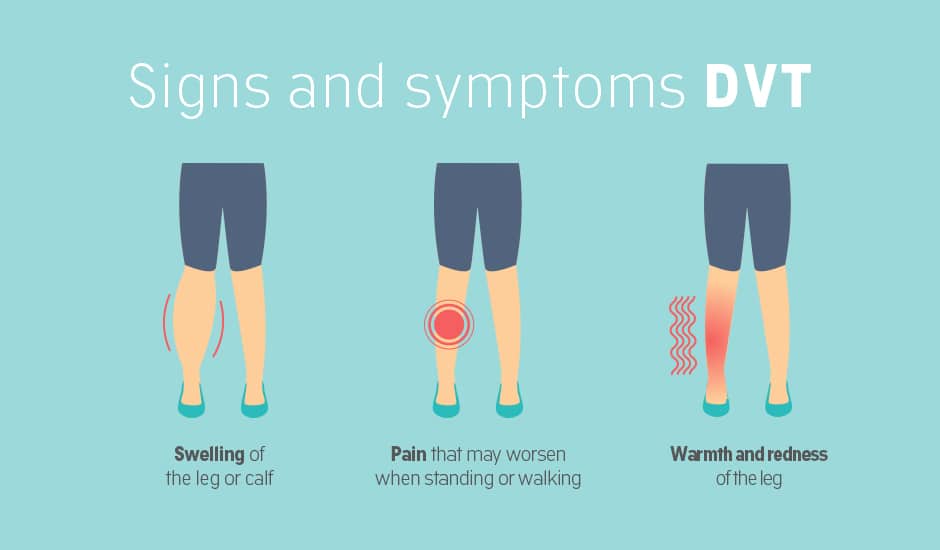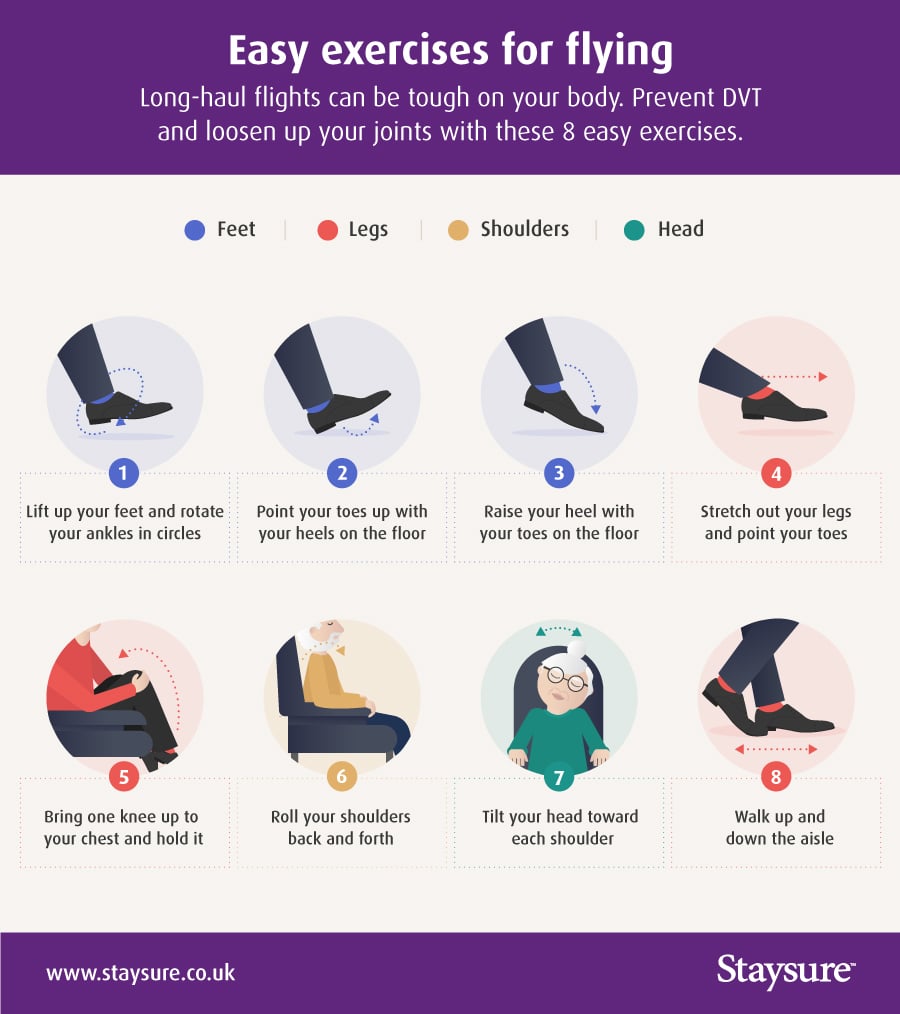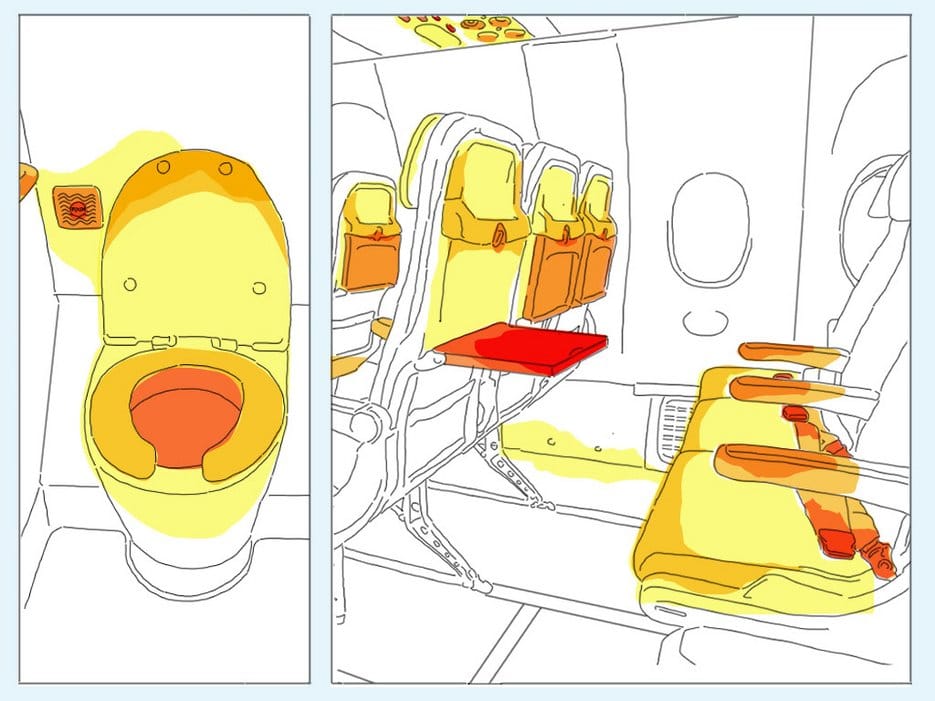Tips for surviving long-haul flights
By Susan Burke March
According to the U.S. Centers for Disease Control (CDC), a long-distance flight is a nonstop flight lasting six or more hours, and more than 300 million travel long-distance every year. And unless you’re fortunate enough to fly first or business class, your seat is guaranteed to be pretty cramped.
As Popular Science writes, “Sitting in a cramped seat for hours isn’t just unpleasant — it can lead to deep vein thrombosis when blood clots form in the legs because of poor blood flow.” They write that the longer you don’t move, the greater the risk for blood clots, because blood moves more slowly and collects in the legs when they are hanging down. And worse, a clot could break free and lodge in the lungs.
Fortunately, this is a rare occurrence, unless you have additional risk factors. The American Council on Exercise (ACE) reports that those most susceptible are:
- People with cancer, chronic heart or respiratory failure, or an inherited or acquired predisposition to clotting, obesity or varicose veins
- Those who recently have had major surgery, have been bed-ridden or have suffered a blow to the leg
- Women who are pregnant, who’ve recently had a child, who are taking contraceptives or who are undergoing hormone replacement therapy
- People 40 years and older may also be at increased risk.
Although the risk of developing DVT is small (about one in a million), risk increases after four hours of travel. Swelling, tenderness, warmth and discoloration or redness in the lower legs may be signs of DVT. Consult your doctor right away if you notice any of these symptoms after long travel. Unfortunately, only half of people who have DVT have any symptoms.
What to do?
If you have a high risk for DVT see your doctor before a long-haul flight to discuss anticoagulant medication. Although aspirin is used to prevent arterial blood clots (related to heart attacks and strokes) it is not shown to prevent vein blood clots.
Move around as much as possible — the ACE advises take a quick stroll up and down the aisle as often as possible — the reason why I always get an aisle seat. It is not advised to sleep for the duration of a long-haul flight, but get up every two or three hours and walk around.

Do the following in-flight exercises every 30 minutes:
- Ankle rotations: lift your feet off the floor and draw a circle with your toes, aiming for a complete rotation/full range of motion through your ankle. Repeat in the opposite direction.
- Foot lifts: alternate keeping your toes on the floor and lifting your heels with keeping your heels on the floor and lifting your toes.
- Knee lifts: sitting straight up, keep your knee bent and lift your thigh so that you’re flexing at the hip. Alternate legs.
- Toe Curls: curl your toes, hold, and release. Press your toes against the floor, hold, and release. Wriggle your toes.
- And while you’re at it, do some shoulder rolls and shrugs.
Wear loose-fitting clothing, and … wear compression stockings! Studies show that wearing compression stockings during flights of four hours or more can significantly reduce your risk for DVT, as well as leg swelling. Compression stockings (available in pharmacies and medical supply shops) come in different lengths, from knee-high to the top of the thigh, and from light pressure to strong pressure — low pressure is recommended for most. Some people should not wear them, including people with peripheral neuropathy or skin infections, or people with peripheral artery disease. If you have a medical condition, speak with your doctor to be sure.

It takes a concerted effort to avoid a situation where you may be at increased risk. A long flight, dehydration, and lack of movement conspire against you. So take a stand.
On layovers walk around as much as possible, and make it a brisk walk. It’s common to have puffy feet and ankles after a long flight, so when you arrive, walk around to get your blood flowing. The great majority of people will have no problems, however, if you develop a swollen calf or breathing difficulties after a long trip then see a doctor immediately.
Finally, because the air on a plane is very dry, it’s important to stay hydrated. Water is best, and worst is soft drinks, alcohol, and caffeine, which can act as diuretics. Very dry air means your mucus membranes are dried out too, which prevents them from trapping germs, leaving you more vulnerable to other people’s viral infections. It may be helpful to bring a small (closed and less than 3.4 oz./100 milliliters to get through security) bottle of saline solution (without unnecessary chemicals) to moisturize the inside of your nose. Bring some disinfecting wipes, and wipe down your armrests, seat belt buckle, and tray table and even the air vent above you. ¡Buen viaje!
 Read more:
Read more:
From the American Council on Exercise: https://www.acefitness.org/education-and-resources/lifestyle/blog/6667/how-to-avoid-deep-vein-thrombosis-on-long-plane-flights
From the Centers for Disease Control and Prevention: https://www.cdc.gov/ncbddd/dvt/travel.html

















